Positioned on the periphery of Europe, with open seas to the east and west, Britain and Ireland are ideally positioned to attract vagrants from all points of the compass. Migration is a key time for these isles and vagrants make up a significant part of both national lists. Despite the British and Irish lists now standing at 620 and 480 respectively, each continues to increase at a ballpark rate of one or two per year as new species – some long predicted, others entirely unforeseen – are added.
There are arguably no more exciting arrivals than those from North America. Transatlantic wanderers cause shockwaves when they appear, enchanting and exciting birders to an often-unparalleled degree. Undoubtedly contributing to their aura is the epic journey which they have undertaken to get here – unaided sea crossings of in excess of 1,800 miles seem scarcely possible for many landbirds. For many birders, there is little better than a new species for Britain or Ireland turning up from North America – and especially so if it happens to be a first for the Western Palearctic, too.
The Azores – and in particular Corvo and Flores – has stormed into a league of its own since it was 'discovered' as a destination to find North American passerines in the mid-2000s, but it is Britain and Ireland that have otherwise traditionally been viewed across Europe as the premier locations for producing vagrants from the other side of the Atlantic. And while annual totals of American species now fall firmly in the shadow of those racked up by the likes of Corvo each autumn, these isles nonetheless continue to produce surprises on a regular basis, while Azores arrivals give a flavour of what we might expect in the future.
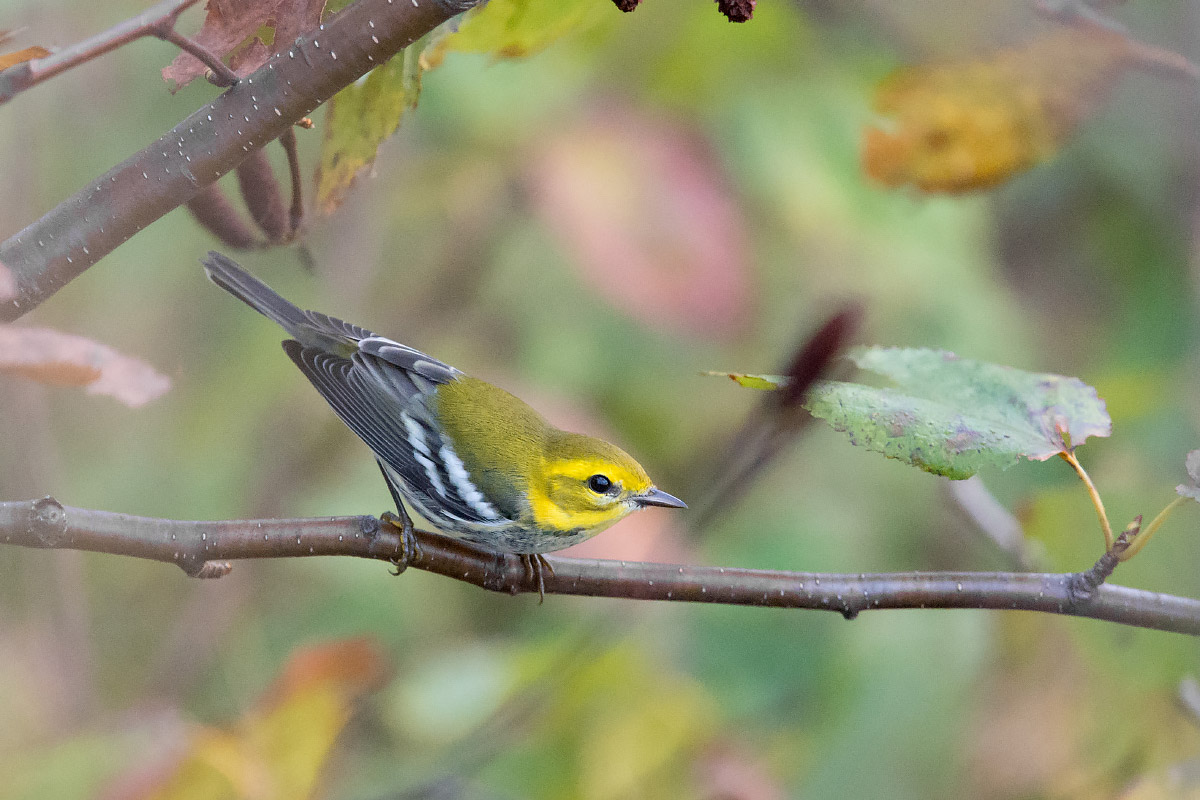
Black-throated Green (above) and Black-throated Blue Warblers rank among the most likely Nearctic landbirds to appear next in Britain or Ireland (Ray Hennessy / www.rayhennessy.com).
More to come
The exciting thing is that despite Britain's and Ireland's already extensive lists of American vagrants, there are plenty of potential additions still to come – some fairly long shots, but others seemingly well overdue. We take a look at some of those which will likely make landfall here sooner or later.
To date, Britain and Ireland has recorded a combined 20 species of Nearctic wood warbler – a tally second only to the Azores. Particularly outstanding records include one of only two Western Palearctic (WP) Golden-winged Warblers and two of three WP occurrences of both Cape May and Wilson's Warblers. Many of the rarest examples of this family to grace the region have occurred here, and thus it's far from fanciful to anticipate more will appear in the future.
A total of 28 species of wood warbler have been recorded regionally. With the number of WP reports of both Black-throated Blue and Black-throated Green Warblers now well into double figures and stemming from both the Azores and Iceland, it is these two that stand out as the most obvious omissions from the British and Irish lists.
We know from geolocator studies that Connecticut Warbler routinely performs long overseas flights, much in the same vein as Blackpoll Warbler. It was only added to the WP list in October 2019, when a bird was trapped and ringed on Flores, Azores, but this sole occurrence belies what could be a regular vagrant on this side of the Atlantic – its fearfully elusive nature may mean that it goes undetected. But this is a very good shout for the near future – even if it may be extracted from a mistnet.
Prothonotary and Cerulean Warblers, seen in the Azores and Iceland respectively, are also fair bets, as is another species on the Icelandic list: Palm Warbler. With just a single WP record from Corvo in October 2012, Prairie Warbler is a perhaps a bit more of a long shot. However, Yellow-throated Warbler, also recorded once in the Azores, is perhaps even more improbable given its short-distance movements and southerly distribution – but never say never. The same applies for other southerly species such as Worm-eating and Swainson's Warblers, which are sometimes touted as the next big arrival by European birders.
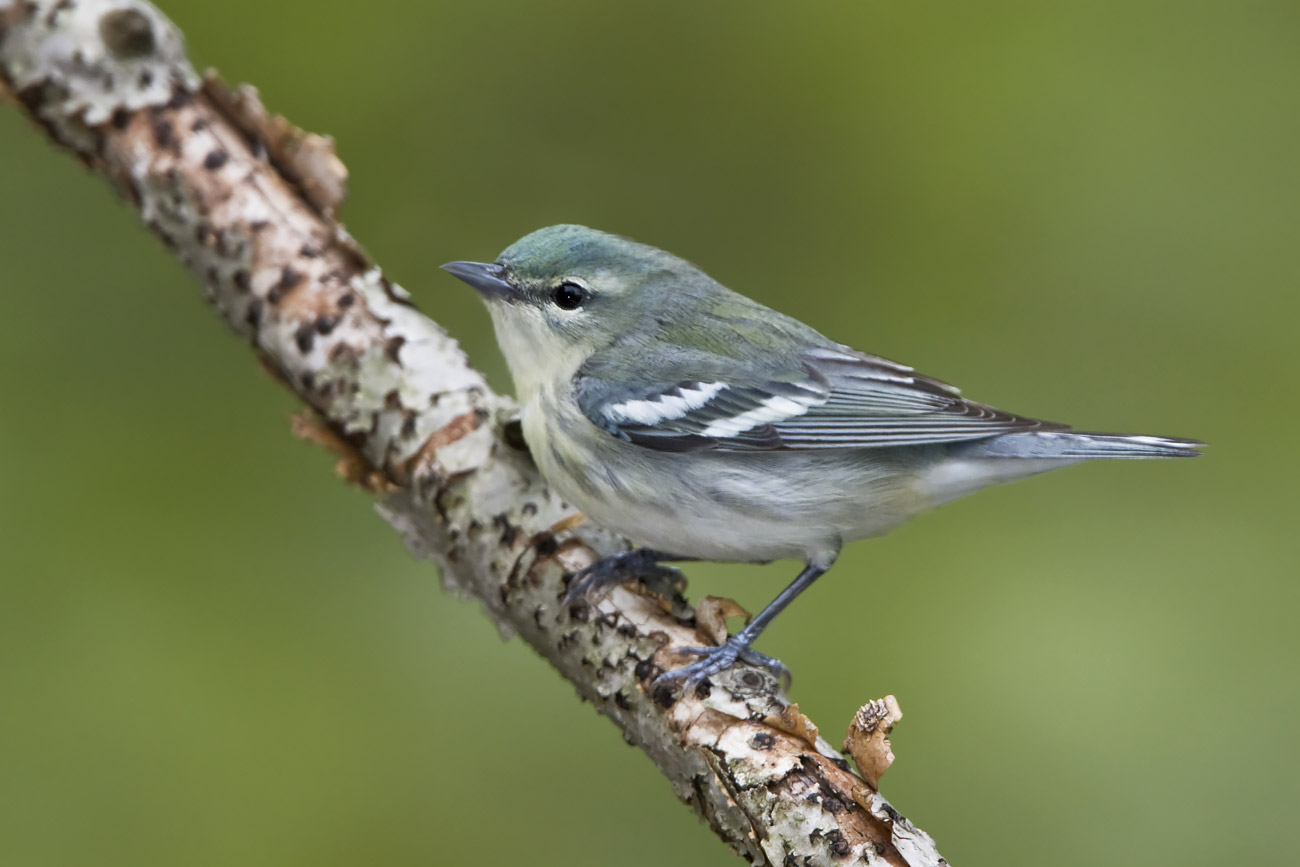
One of the most beautiful of all North American warblers, Cerulean Warbler occurred in Iceland in October 1997, demonstrating its vagrancy potential (Glenn Bartley / BIA).
Overdue over here
Curiously, there are several long-distance migrants yet to appear anywhere in the WP which could easily make an appearance in Britain and Ireland. These include Orange-crowned, Nashville, Kentucky and Mourning Warblers, although the last three are elusive beasts that would take some finding. Louisiana Waterthrush, too, must be in with a chance, but Yellow-breasted Chat is probably another one for the 'hope' rather than 'expect' category.
For something a bit more outlandish, how about Townsend's Warbler? A west-coast species, it nonetheless occurs regularly in Newfoundland – and it only takes one to get here. Black-throated Grey Warbler is also worth considering – if Varied Thrush can make it, then why not this?
It's a bit of a mystery as to why Warbling Vireo hasn't yet been seen in the WP. Generally more common and conspicuous in North America than Philadelphia Vireo, and every bit as much of a migrant, it's almost unfathomable that it has not yet appeared in the Azores – presumably some aspect of its phenology makes it averse to long sea crossings, or its migration route makes it a highly unlikely vagrant, despite its relative abundance.
Blue-headed Vireo must surely be one to make it someday, although again a more likely location might be Corvo rather than Cape Clear. White-eyed Vireo has now occurred several times in the Azores, but its short-distance movements and short-winged structure perhaps mean that it is simply not adapted to a sea crossing double the length of that which it has already completed. An unlikely addition, then, but as vagrants so often prove, nothing is impossible.
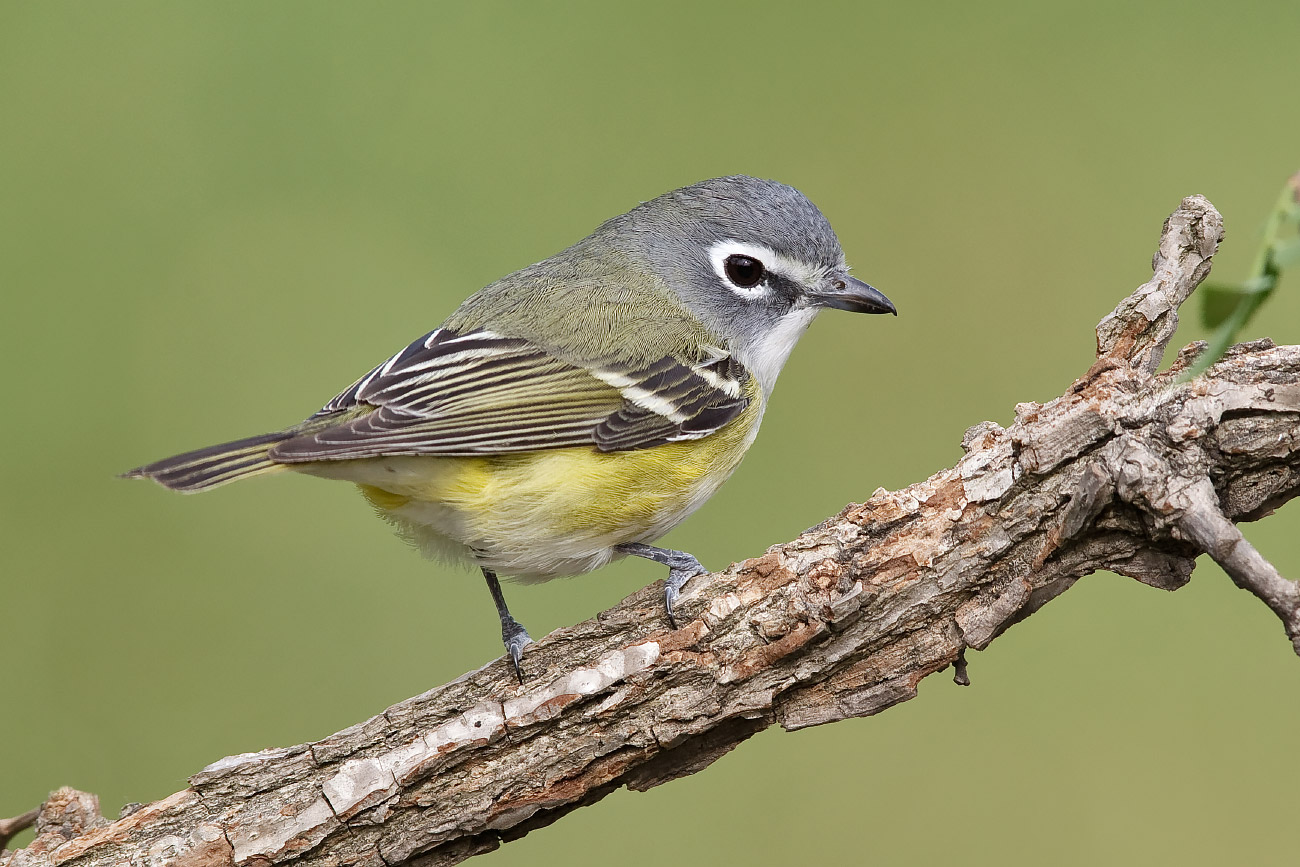
Three vireos – Warbling, White-eyed and Blue-headed (above) – are all be on the cards for a potential appearance here some day (Brian E Small / www.agami.nl).
With eight records of nine birds since 2009, Dickcissel has been occurring almost as regularly as Bobolink in the Azores in recent years, and this attractive seed-eater must be a very strong contender for the next first for Britain or Ireland from the west. Generally conspicuous and favouring sparrow flocks, it would be a comparatively easy bird to pick up if present on a Hebridean island or Irish headland. There is a Norwegian record from July 1981 and thus spring cannot be ignored for a British or Irish arrival.
The first Blue Grosbeak for the region was found on Corvo in 2018 and there is a small chance that this chunky finch could one day occur in Britain or Ireland – although our paltry total of just two Indigo Buntings compared to several dozen in the Azores perhaps puts things into perspective with this one.
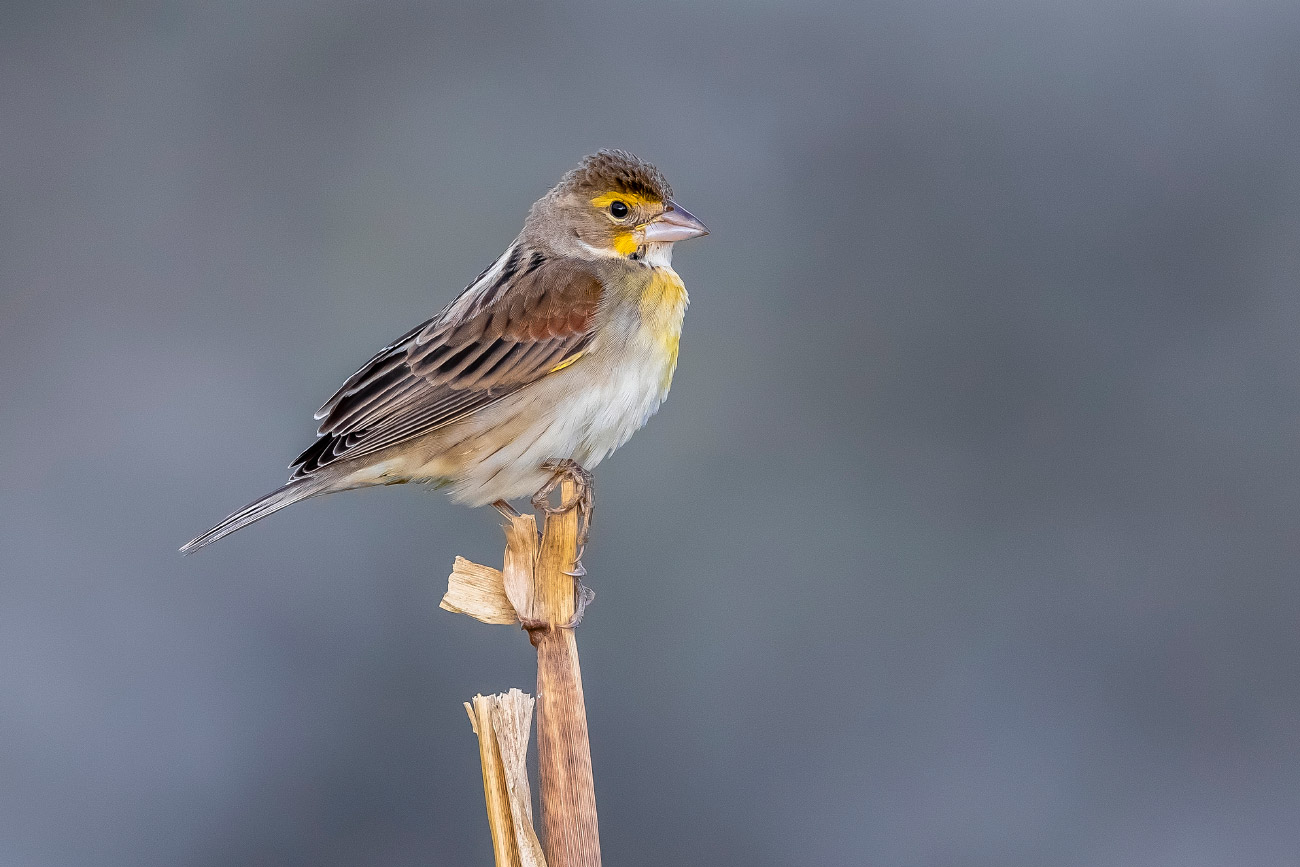
Dickcissel is being encountered almost as regularly as Bobolink in the Azores nowadays. If this ratio translates then a British or Irish first is surely on the cards at some point soon (Vincent Legrand / www.agami.nl).
Likely Lincoln's
Sparrows are an unpredictable family, with ship assistance undoubtedly playing a significant role in the arrival of many of the vagrants seen in Europe. American Tree Sparrow first occurred in the region in southern Sweden in November 2016 – and this must be one of the more likely candidates to appear on our shores in the future. Standing head and shoulders above all others as a potential addition, though, is Lincoln's Sparrow. First seen in the WP on Corvo in 2010, it has since occurred three further times there and once in Iceland (a wintering bird in 2013-14). It is, however, a shy species and unfussy in its choice of habitat, so locating one appears to be the biggest challenge. Other species which are numerous across eastern North America and make medium- to long-distance movements in spring and autumn include Swamp, Vesper, Chipping, Grasshopper and perhaps Clay-coloured Sparrows.
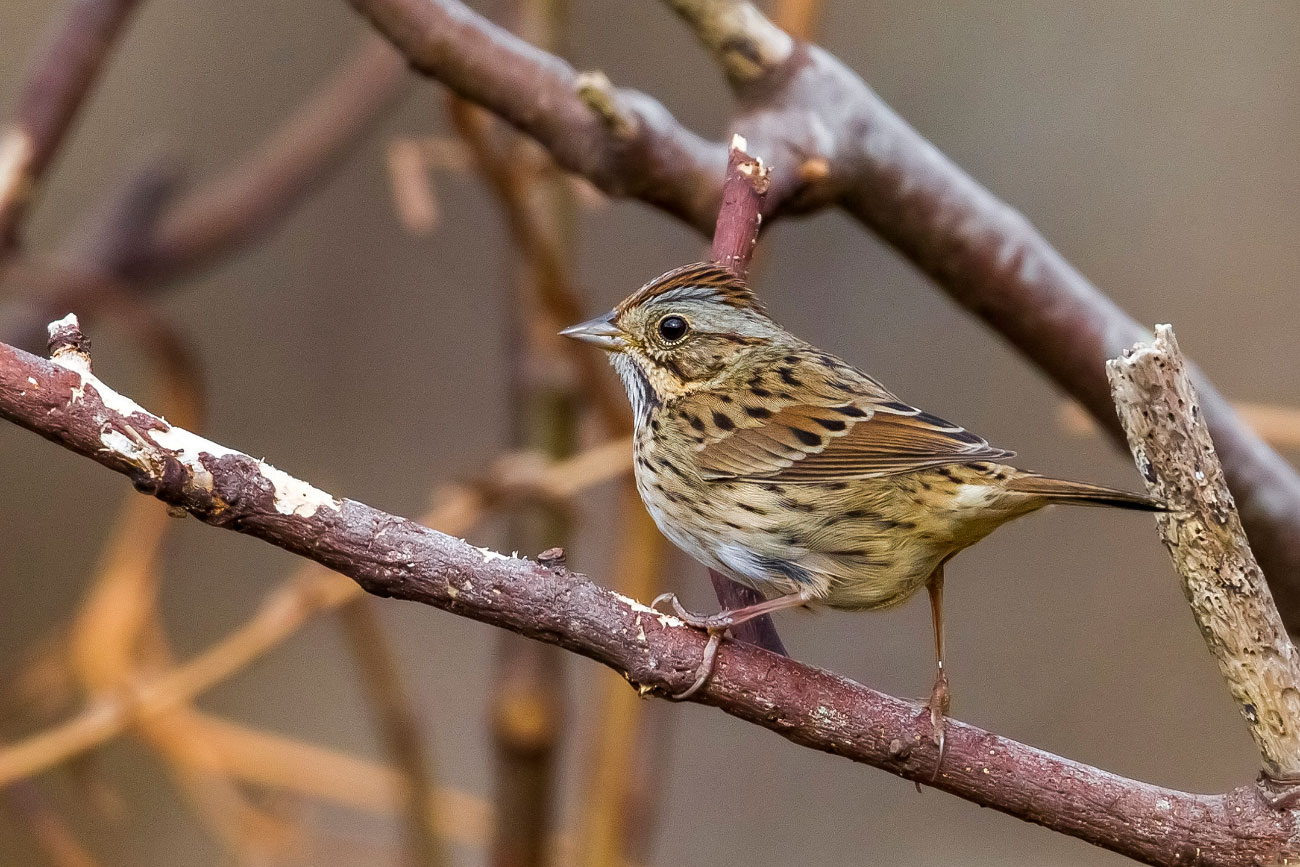
Lincoln's Sparrow is an unobtrusive yet beautiful species which, if the Icelandic record is anything to go by, is as likely to be found attending a British or Irish bird-feeding station as on a windswept headland (Vincent Legrand / www.agami.nl).
There are also several tyrant flycatcher species which are surely ripe for an appearance in Britain or Ireland. Yellow-bellied Flycatcher has not yet made it to the WP, but its range and migration route is similar to Alder and Acadian, both of which have already been seen in Britain. Least Flycatcher occurred in Iceland in early October 2003, and also seems a likely bet. Eastern Wood Pewee has been seen three times on Corvo in the past few autumns and it too has every chance of occurring.
As unlikely a visitor to the WP as it may seem, Western Kingbird is regular on the Eastern Seaboard of North America and made it to Flores in October 2018. Given that Britain and Ireland have now hosted a combined total of three Eastern Kingbirds, there has to be a chance that its Western congener might turn up. Olive-sided Flycatcher is a long-cited possibility to find its way here and should be easy to locate if it appears given its tendency to perch conspicuously on high and bare branches – although this spectacular species is yet to occur anywhere within the WP.
And what about hirundines? There have been one or two claims of Northern Rough-winged Swallow from the Azores and Ireland in recent years, but none fully documented and accepted – yet. Thinking a little more outside the box, how about Cave Swallow? A species with a southerly distribution, it nonetheless occurs in influxes periodically as far north as Newfoundland at the end of autumn, sometimes in quite significant numbers. Given precious few hirundines remain in Britain and Ireland by mid-November, a late autumn (or even early winter) Cave Swallow careering round a headland should get itself noticed.
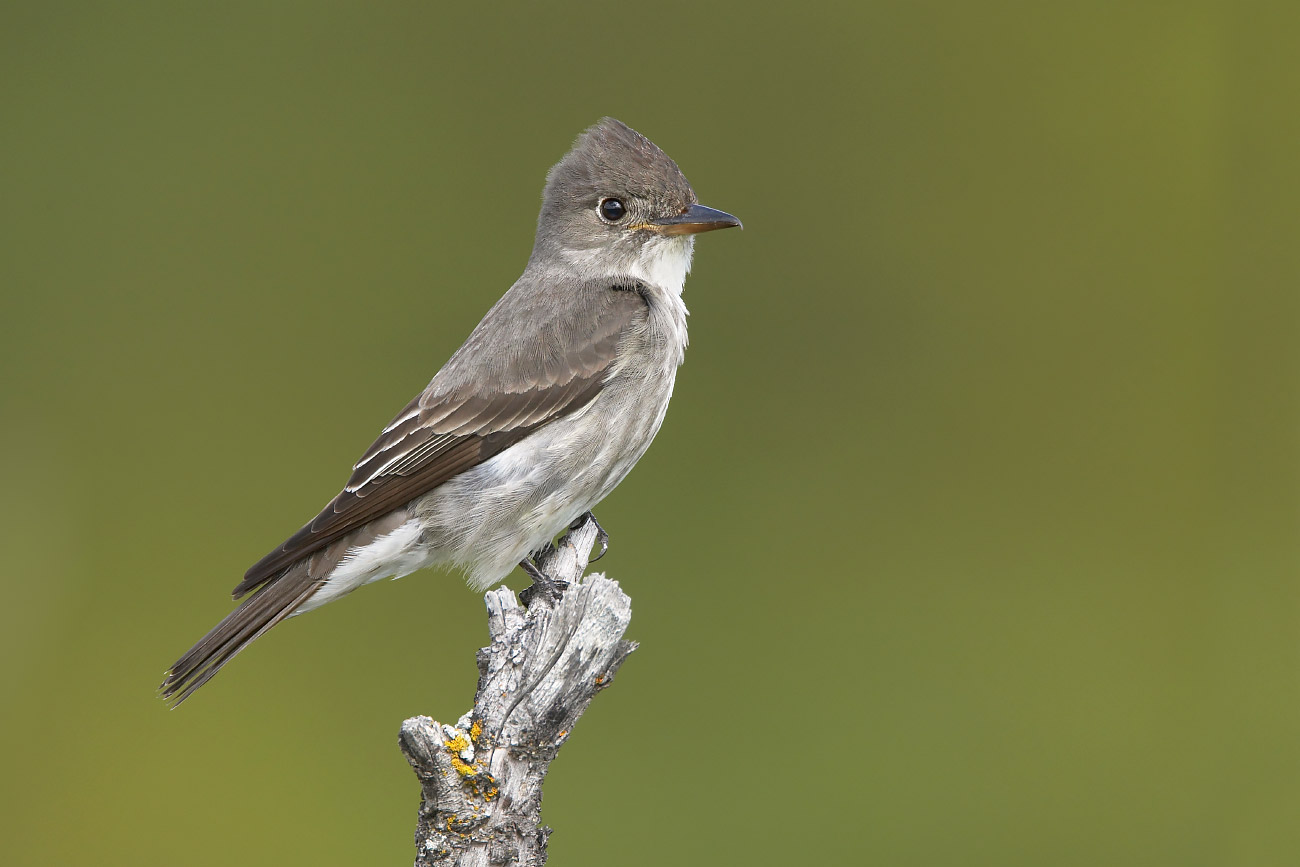
A long-distance migrant, Olive-sided Flycatcher is large and favours conspicuous perches from which to feed. Finding one, therefore, should be easy – it just needs to turn up! (Robert Royse / BIA).
Wanted waders
It is not just American landbirds that offer opportunities for new additions to the national lists. Some of the most popular British and Irish vagrants of all time have been herons and egrets. Thousands saw the long-staying Snowy Egret in south-west Scotland during its protracted stay in 2001-02, while the Little Blue Heron in Co Galway in September-October 2008 was the subject of a massive twitch.
Two more members of this family would without doubt generate a similar reaction should they turn up. Neither Yellow-crowned Night Heron nor Tricoloured Heron seemed on the radar at the turn of the century, but several high-profile occurrences since then have rendered both as realistic candidates to be the next 'first'. Six of the former have been seen in the Azores since the first in 2010, with another reaching Madeira and, significantly in summer 2020, a further individual on mainland Portugal. The Azores has also hosted at least four of the latter species, with one on São Miguel as recently as October 2018, and one of these (in October 2007) subsequently relocating to the Canary Islands for several months.
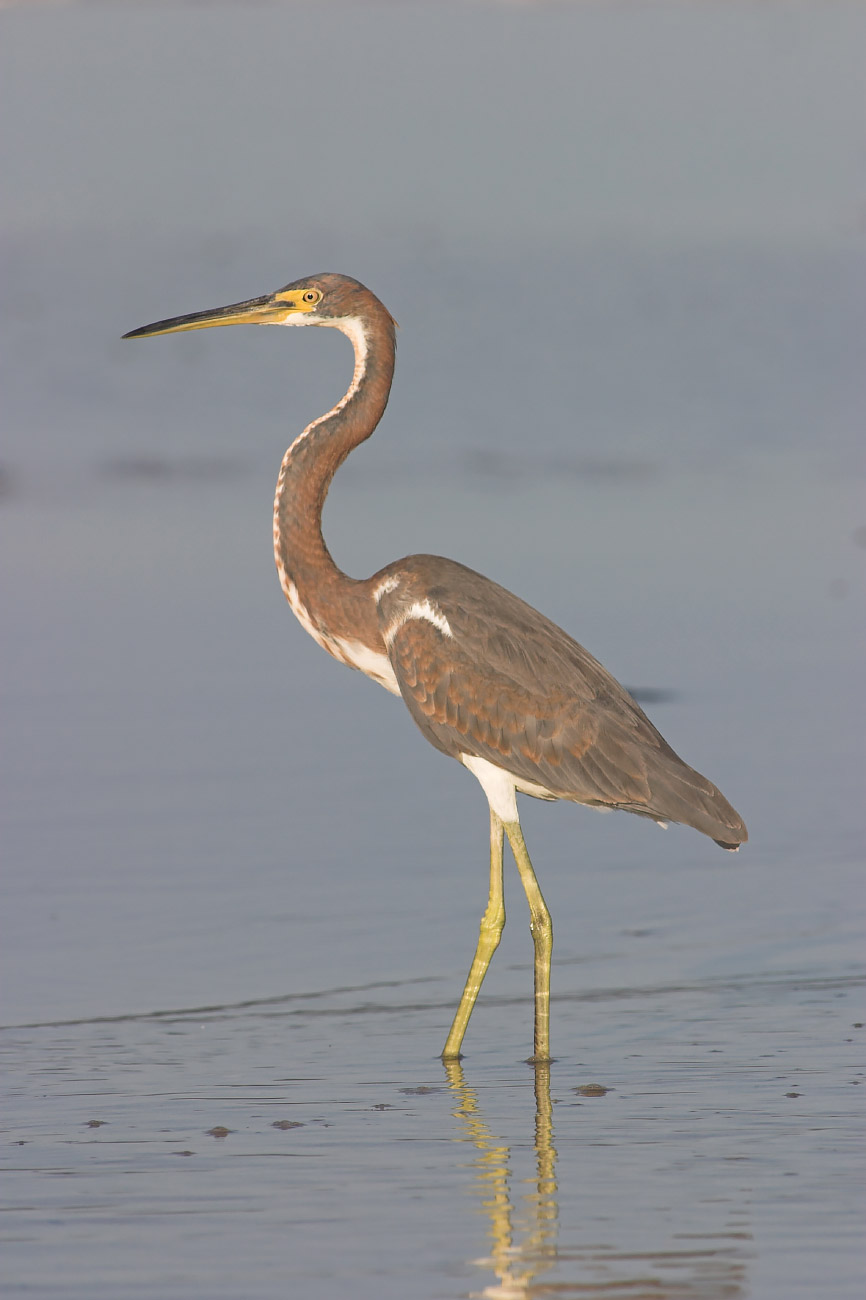
Tricoloured Heron may seem like an exotic denizen of the subtropics, but if Little Blue Heron can make it to Ireland, there’s no reason why this species can’t either (Glenn Bartley / BIA).
Given their ability to move long distances over water, the list of potential shorebird additions is much shorter for the simple fact that almost all the expected species have occurred here already. The elephant in the room, though, is Willet. As yet unrecorded in Britain and Ireland, both the eastern and western subspecies have been confirmed in the WP. Localities of past finds include Norway, Finland, France, mainland Portugal and even Italy, as well as eight times in the Azores. It is a long-predicted vagrant here, yet the long wait continues – a spanner in the works is that Willets will happily frequent any beach or patch of rocky coastline, opening up thousands of miles of suitable habitat between west Cornwall and the Butt of Lewis, with the entirety of Wales and Ireland thrown in. However, it is certainly a case of when and where, rather than if.
The surprising capabilities of the rail family to move great distances should never be underestimated, and the tiny Yellow Rail fits the bill for a potential addition over here. A long-distance migrant, it breeds in wet marshes throughout interior Canada and the northern United States, wintering on the south-east coast of the US. However, finding one provides the greatest challenge – notoriously difficult to see, the problem is more likely locating such a skulker rather than questioning its potential as a vagrant, and the most likely occurrence seems to be one flushed from a grassy Azorean field – or, sadly, found expired somewhere.
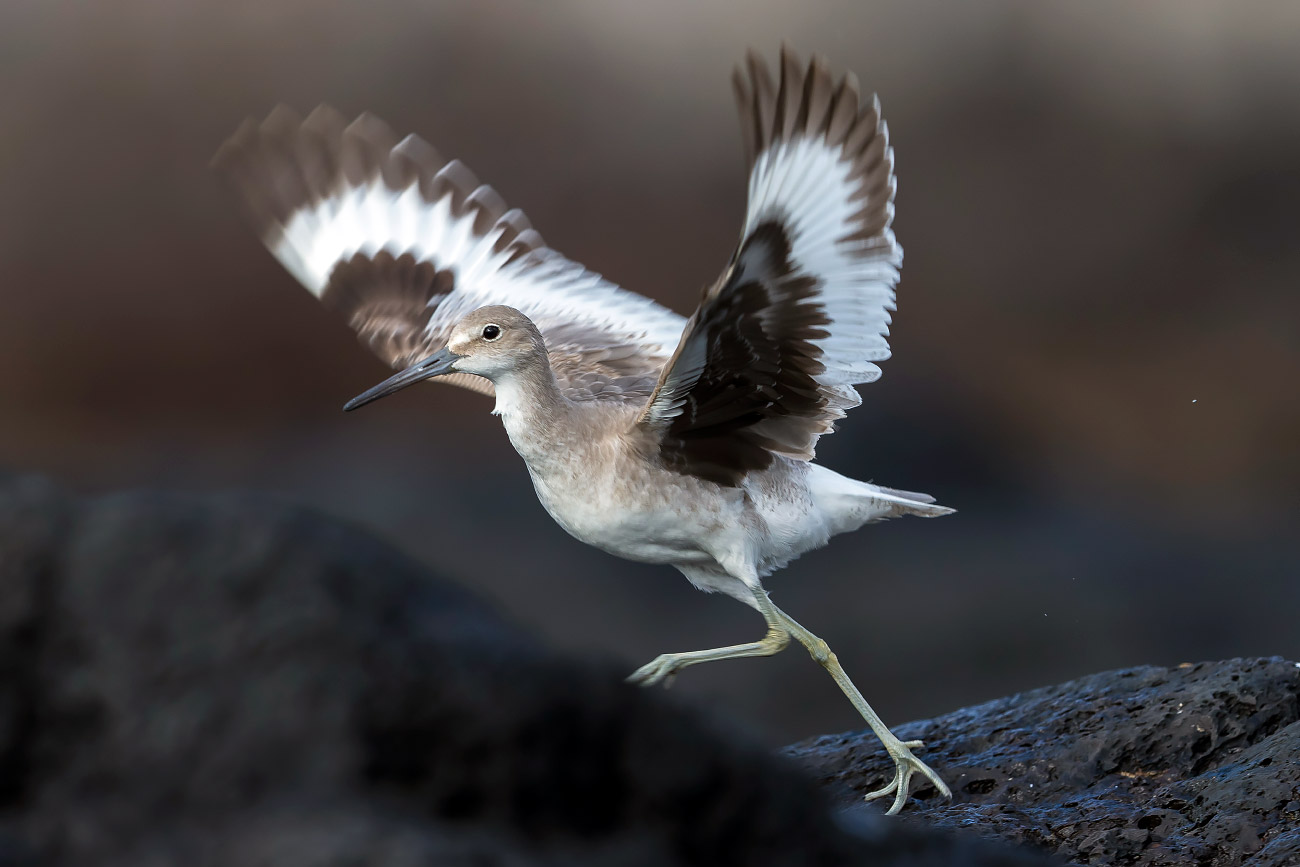
Given it has occurred in locations as widespread as Norway, Finland, Italy and mainland Portugal, as well as numerous times in the Azores, it's a genuine surprise that Willet hasn’t yet been recorded in Britain or Ireland (Daniele Occhiato / www.agami.nl).
The ultimate goal for any keen British or Irish rarity hunter is to add a species to the national list. As the years pass, this becomes an ever-harder task – but there are still plenty of possibilities. I've covered 40 North American species which could potentially make it here someday, serving as a reminder that there is plenty of scope for the find of a lifetime. Hopefully it will serve as inspiration for the years to come.
- This article was originally published in the January 2020 issue of Birdwatch magazine. Follow Josh Jones on Twitter: @jrmjones.


